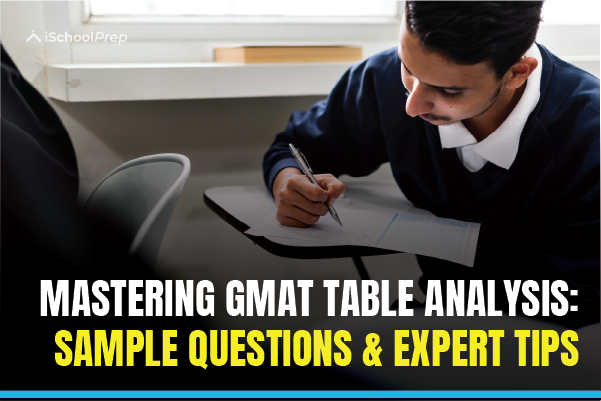Table of Contents
Introduction
The SAT exam can seem challenging, but armed with the right tools, including the SAT math formulas, your path to achieving a high score can be smoother. These formulas aren’t just mathematical expressions; they’re keys to unlocking the numerous problem-solving doors in the SAT Math section. As stated by the College Board, the Math section makes up 50% of the total SAT score, indicating its critical role. Let’s take a deep dive into understanding, learning, and memorising these indispensable formulas.
What is the SAT Math Formula Sheet?
The SAT math section is divided into two portions: one allows the use of a calculator, and the other does not. However, the comforting fact is that you’re provided with a SAT maths formula sheet at the beginning of each Math section. This formula sheet offers you a set of basic formulas and conversions. Some standard SAT maths formulas include area and volume formulas, quadratic formulas, circle properties, and some trigonometric ratios.
However, it’s important to note that this sheet doesn’t contain all the formulas you might need to answer every question. It implies the necessity to have specific additional SAT math formulas at your fingertips.
Here’s what it usually contains:
Geometry Formulas
- Area of a Circle: A=πr2A = \pi r^2A=πr2
- Circumference of a Circle: C=2πrC = 2\pi rC=2πr
- Area of a Rectangle: A=lwA = lwA=lw
- Area of a Triangle: A=12bhA = \tfrac{1}{2} bhA=21bh
- Pythagorean Theorem: a2+b2=c2a^2 + b^2 = c^2a2+b2=c2
- Volume of a Rectangular Solid: V=lwhV = lwhV=lwh
- Volume of a Cylinder: V=πr2hV = \pi r^2 hV=πr2h
- Volume of a Sphere: V=43πr3V = \tfrac{4}{3}\pi r^3V=34πr3
- Volume of a Cone: V=13πr2hV = \tfrac{1}{3}\pi r^2 hV=31πr2h
- Volume of a Pyramid: V=13BhV = \tfrac{1}{3}BhV=31Bh (where BBB is the base area)
Algebra & Other Notes
- Standard equation of a circle: (x−h)2+(y−k)2=r2(x – h)^2 + (y – k)^2 = r^2(x−h)2+(y−k)2=r2
- Distance formula: (x2−x1)2+(y2−y1)2\sqrt{(x_2 – x_1)^2 + (y_2 – y_1)^2}(x2−x1)2+(y2−y1)2
- Midpoint formula: (x1+x22,y1+y22)\left( \tfrac{x_1 + x_2}{2}, \tfrac{y_1 + y_2}{2} \right)(2×1+x2,2y1+y2)
Although these formulas are not included in the SAT maths formula sheet, knowing them can save you precious time during the test.
Additional Essential Formulas
In addition to the ones previously mentioned, here are a few more critical SAT maths formulas that are likely to come in handy during the test:
- Average (Arithmetic mean): Average = (Sum of terms)/ (Number of terms)
- Percentages: Percent Change = [(Final value – Initial value)/ Initial value] x 100%
- Probability: Probability = Number of favourable outcomes / Total number of outcomes.
- Exponent rules: For any non-zero number a, (a^n)/(a^m) = a^(n-m), a^n * a^m = a^(n+m), (a^n)^m = a^(nm).
- SOHCAHTOA (For right triangles): Sine = Opposite/Hypotenuse, Cosine = Adjacent/Hypotenuse, Tangent = Opposite/Adjacent.
Understanding these formulas and their applications can equip you with the necessary mathematical tools to answer a range of SAT maths problems.
How to Practice SAT Math Formulas?
Knowing the formulas is just the first step; practising their application is equally, if not more, crucial. As the adage goes, “Practice makes perfect.” According to a study by Dr. John Hattie, practice testing is one of the most effective study techniques, demonstrating its significant role in your SAT preparation.
There are several ways to practice the SAT by applying these maths formulas for the SAT:
Step 1: Get Familiar with the Formula Sheet
- Read through the sheet slowly until you can recall the formulas without looking.
- Don’t just memorise—try to picture what each formula means.
- Example: A=12bhA = \tfrac{1}{2}bhA=21bh → imagine the base and height of a triangle.
Step 2: Categorize Problems
Break practice problems into groups:
- Geometry: areas, volumes, circles, Pythagoras.
- Algebra: quadratic forms, distance/midpoint.
- Word Problems: Applying Formulas to Real-Life Scenarios.
This way, you’ll start associating a problem type with its formula automatically.
Step 3: Drill With Flash Practice
- Write problem types on flashcards: one side = problem, other side = formula.
- Example: “Find volume of a cone with radius 3 and height 4” → flip → V=13πr2hV = \tfrac{1}{3}\pi r^2hV=31πr2h.
- Mix easy and hard ones so your brain learns to choose the right formula.
Step 4: Timed Practice
- Use official SAT Math practice tests.
- As you solve, cover the formula sheet and try from memory. If you’re stuck, uncover it—but track when you needed to.
- Goal: reduce dependence on the sheet with each session.
Step 5: Learn Common Traps
- SAT often twists questions to check if you know the difference between diameter and radius, or base vs height.
- Practice with problems that swap in sneaky values so you train to read carefully.
Step 6: Apply to Mixed Sets
Once confident, don’t practice formulas in isolation. Do mixed-problem sets so you’re forced to identify which formula applies without being told.
Mastering these SAT maths formulas is not an overnight process, but with consistent effort and practice, it’s definitely achievable.
Strategies to Memorise SAT Maths Formulas
Memorising SAT maths formulas can seem like a daunting task. However, with the right strategies, you can make the process more manageable and efficient. Here are a few tips:
Practice, Practice, Practice
Repetition is the secret sauce. The more problems you solve using a formula, the more your brain connects the “formula” to its “function.” Over time, recalling it feels natural—like riding a bike.
Write It Down
Don’t just read formulas—write them out. Copying (or rewriting from memory) helps cement them in your mind. Struggle to recall one? That’s your cue to practice it again.
Flashcards Work Wonders
Old school or digital—flashcards make review quick and portable. One side: formula. Other side: definition or example. Shuffle them often so you’re training recall, not just order.
Acronyms & Mnemonics
Turn scary formulas into catchy phrases.
- PEMDAS → Please Excuse My Dear Aunt Sally
- SOH-CAH-TOA → for trig ratios.
- Little memory hacks make big formulas stick.
Apply in Real Life
Find chances to use formulas outside of textbooks:
- Calculate your room’s area.
- Estimate the volume of a bottle.
- Figure out speed while jogging.
- The more real it feels, the easier it is to remember.
Understand Before You Memorise
Don’t treat formulas like magic spells. Take time to learn why they work. When you grasp the logic, memorisation comes as a bonus, and you’ll know how to apply it in tricky SAT problems.
Chunk It Down
Break complex formulas into smaller parts. Master each part before combining them. Think of it like learning a song verse by verse instead of all at once.
Use Tech Tools
Apps like Quizlet or math practice sites can walk you through formulas step by step. Use online quizzes, video tutorials, or formula trainers to reinforce what you’ve studied.
Visualise It
Picture the formula in your head—shapes, symbols, how the pieces fit together. Visual memory makes abstract formulas feel concrete.
Rest & Stay Organised
A well-rested brain is like a sponge; a tired one is like a brick. Sleep, take breaks, and keep your notes tidy so you can review without stress.
Quick Reminder: Don’t aim to memorise everything at once. Spread out your practice, and review a few formulas daily—consistency> cramming.
Key Takeaways
- The SAT provides a formula sheet, but memorising additional essential SAT maths formulas will be incredibly beneficial.
- Understanding the concept and application of each formula is crucial for effective utilisation during the test.
- Consistent practice using a variety of resources, such as flashcards, practice tests, and SAT maths workbooks, is essential for mastering these formulas.
- Implement effective test-taking strategies to optimise your time and increase accuracy.
- The SAT math section can feel like a challenging task, but with the proper preparation and tools, it is conquerable.
- Mastering the provided SAT maths formulas and memorising other essential formulas not present in the provided sheet will equip you with the knowledge base to tackle a majority of maths problems on the test.
- Coupling this knowledge with effective test-taking strategies and abundant practice will ensure you can confidently approach this section of the SAT and aim for a high score.
We hope you enjoyed reading this blog. If you have any queries or need assistance with your SAT prep, please reach out to us or leave a comment below.
Liked this blog? Read next: SAT waiving universities | The complete list for 2023!
FAQs
Question 1. What are some other essential SAT math formulas?
Answer- Several vital SAT math formulas aren’t included in the provided sheet. These include the Slope-Intercept Form of a Linear Equation (y = mx + b), Distance Formula, Midpoint Formula, Pythagorean Theorem, special right triangle rules, Circle Equations, and formulas related to averages, percentages, probability, exponent rules, and SOHCAHTOA for right triangles.
Question 2. How can I effectively memorise SAT math formulas?
Answer- For effective memorisation, understanding the concepts behind the formulas is crucial. Regular review, making connections between different formulas, and practical application in solving actual SAT Math problems are effective strategies. You can also use flashcards for quick revision and reinforcement.
Question 3. What test-taking strategies should I use when applying these formulas in the SAT maths section?
Answer- Use your time wisely, especially for challenging questions. It’s important to double-check your work and remember that SAT Math problems typically increase in difficulty. If unsure about a question, try to eliminate incorrect answer choices before guessing, as there’s no penalty for wrong answers on the SAT.






